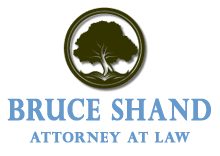Charitable Easements Should Reflect the Charitable Intent of the Donor
I think that conservation and façade easements are a great idea, but only if you have a sincere desire to help protect your property from being changed. The cases over the last few years show that they are probably overrated as a freebie tax deduction.
Sometimes you can have your cake and eat it too. When it comes to conservation and façade easements, however, this is no easy task. It is only the lucky few who can make such an easement work – cake, frosting, and healthy charitable deduction all in one.
Easements are often touted as the “two-birds with one stone approach,” and not without good reason. Unfortunately, that is not always the case as a few planners have discovered when trying to “force” an easement when it really is not appropriate. In fact, this has landed more than a few planners in a tight spot.
Consider the case of Lawrence and Lorna Graev and their agreement with the National Architectural Trust, as covered in a recent Forbes article titled “Side Agreement Voids Easement Charitable Deduction” (guess what they did wrong).
You see, easements are a gift to a charity in the form of forsaken economic potential. Basically, you give a property to charity for some charitable purpose – love of earth, love of architecture, love of history. Since you may have thereby sacrificed potential economic gain (and frequently large potentially considerable) were you to have sold it on the market, you may be entitled to considerable charitable deductions in return. For example, the difference between what you would have sold prime real estate to McDonalds instead of giving it to charity?
To simplify a complex equation, the charitable deduction is the fair market value of an easement. The fair market value of the easement is equal to the difference between the fair market value of the property before the granting of the easement and the fair market value of the property after the granting of the easement. Accordingly, this means there are always at least two very large but ambiguous values over which a taxpayer and the IRS have to quibble.
The quibbling does not always go well for taxpayers, especially those who thought they had their cake and were about to eat it, too. Such was the case of the Graevs and the National Architectural Trust. The original article is instructive for anyone contemplating a charitable easement. Suffice it to say this is a complex area of tax law and appropriate legal advice should be sought before entering into such a giving program.
In summary, there truly are those easements that offer the best of both worlds (your cake and the ability to eat it too) because a wonderful gift to charity begets a wonderful charitable tax deduction. That said, it is not always the case and being “tricky” does not always go unnoticed.
Reference: Forbes (July 15, 2013) “Side Agreement Voids Easement Charitable Deduction”






